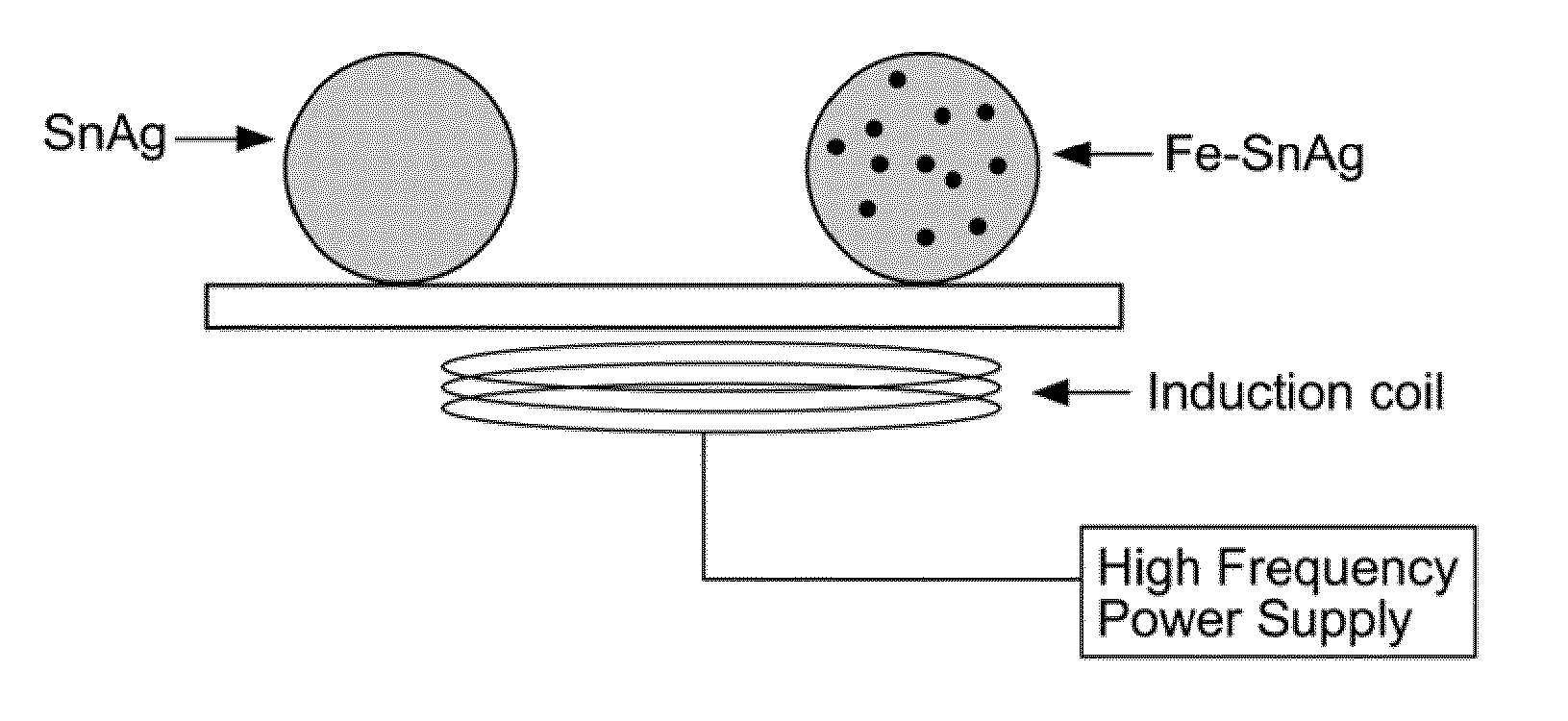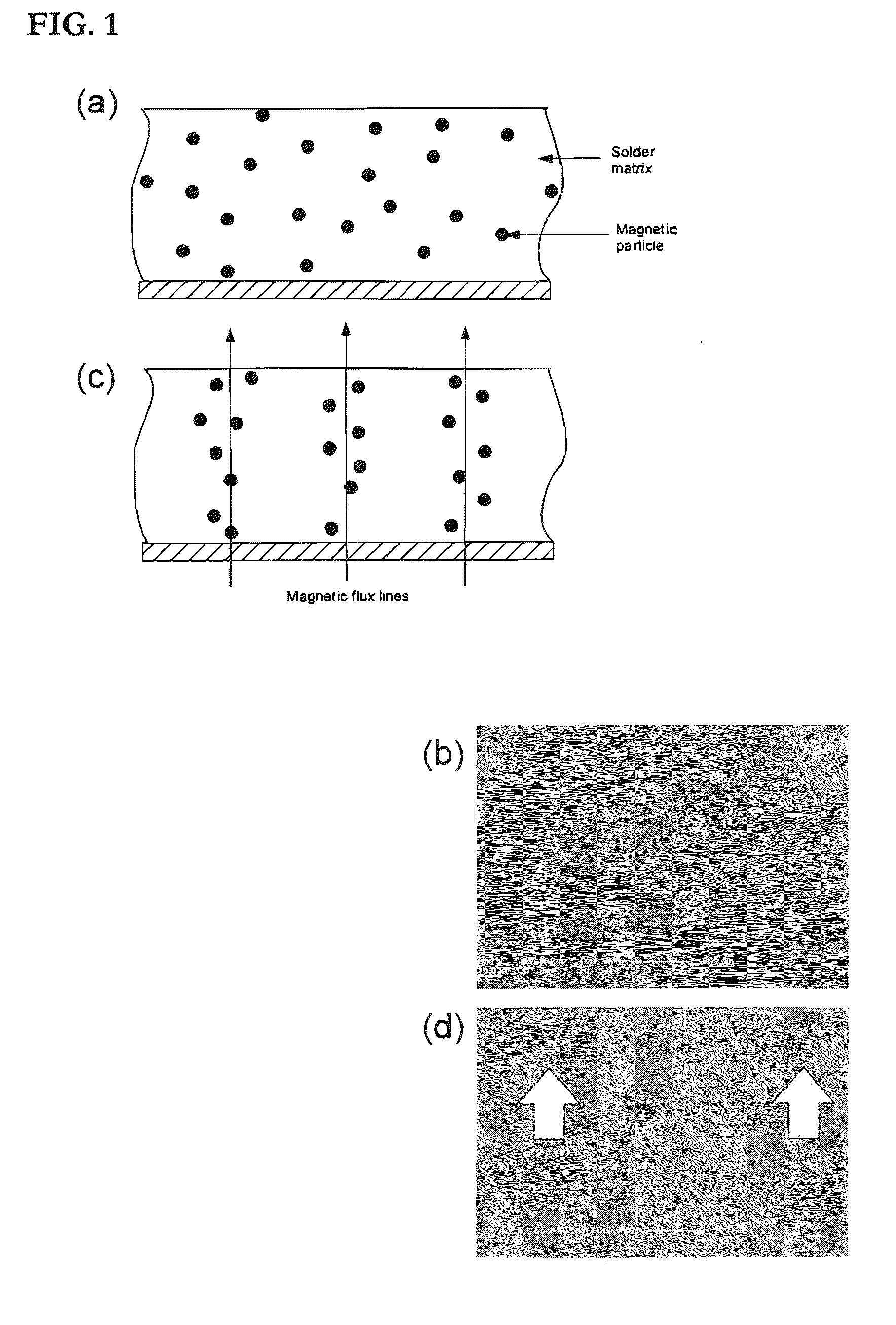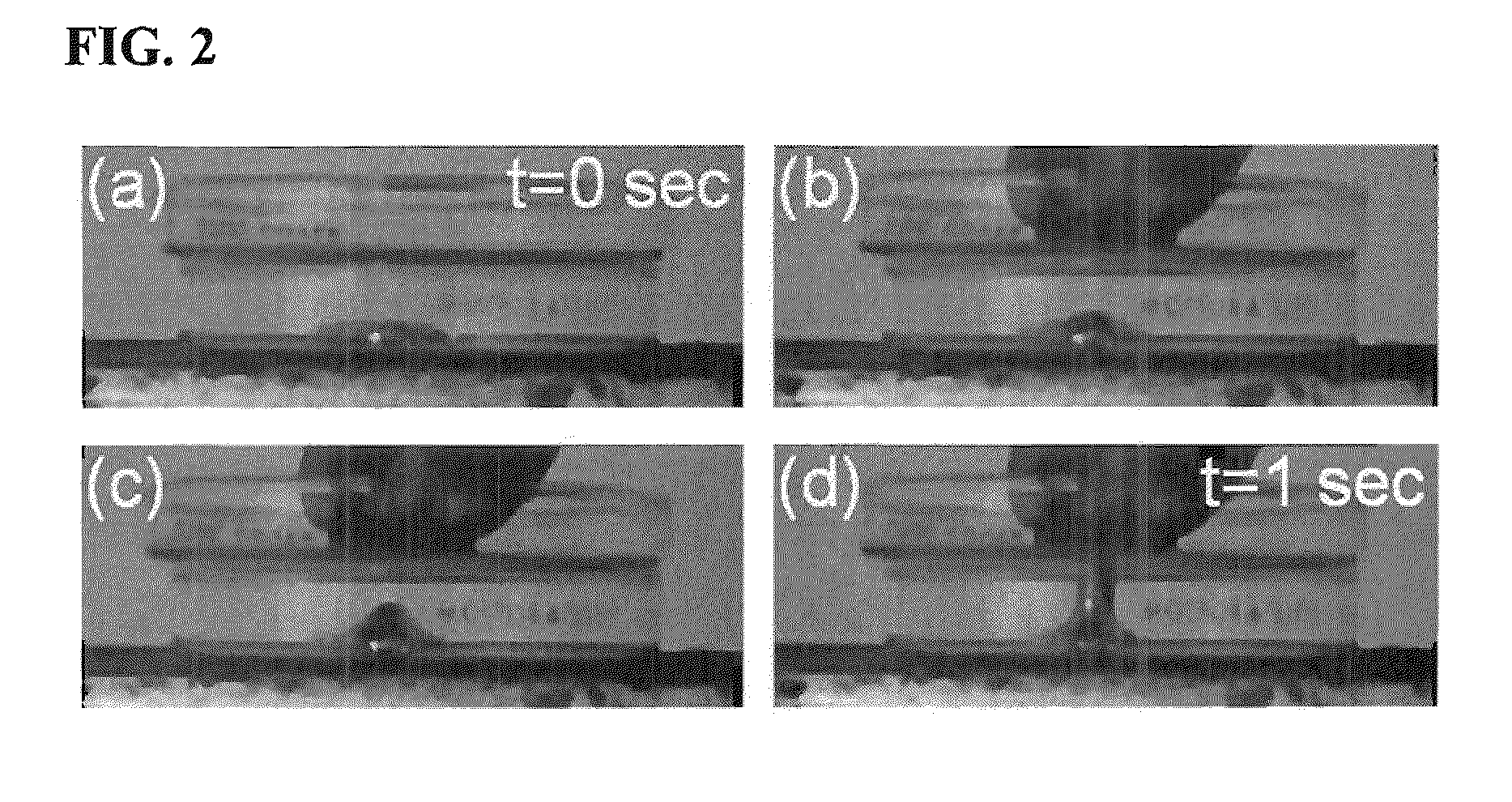Low melting temperature alloys with magnetic dispersions
- Summary
- Abstract
- Description
- Claims
- Application Information
AI Technical Summary
Benefits of technology
Problems solved by technology
Method used
Image
Examples
Embodiment Construction
[0032]Composite materials are disclosed which include magnetic particles suspended as dispersions in low melting temperature metallic alloys such as lead-free solders. The composite lead-free solder materials have tailorable mechanical properties, the ability to be guided in three-dimensions with a magnetic field, and the ability to be heated rapidly by electromagnetic induction.
[0033]Magnetic particles may be any shape: spherical, elongated, plate-like, rod-like, nanowires, or randomly shaped. The form of the “particles” can be particles, intermetallics, separate phases, solute atoms, nanoparticles and precipitates. Typical size ranges from nanometers to 500 microns, with a preferred range of 100 nm to 100 microns. Volume fraction of the magnetic dispersoid can be from about 0.1% to about 50% with a preferred range of about 0.5 to about 20%. The form of the magnetic particles can be crystalline, amorphous, semicrystalline and nanocrystalline.
[0034]To improve the wetting of magnetic...
PUM
| Property | Measurement | Unit |
|---|---|---|
| Fraction | aaaaa | aaaaa |
| Fraction | aaaaa | aaaaa |
| Fraction | aaaaa | aaaaa |
Abstract
Description
Claims
Application Information
 Login to View More
Login to View More - R&D
- Intellectual Property
- Life Sciences
- Materials
- Tech Scout
- Unparalleled Data Quality
- Higher Quality Content
- 60% Fewer Hallucinations
Browse by: Latest US Patents, China's latest patents, Technical Efficacy Thesaurus, Application Domain, Technology Topic, Popular Technical Reports.
© 2025 PatSnap. All rights reserved.Legal|Privacy policy|Modern Slavery Act Transparency Statement|Sitemap|About US| Contact US: help@patsnap.com



